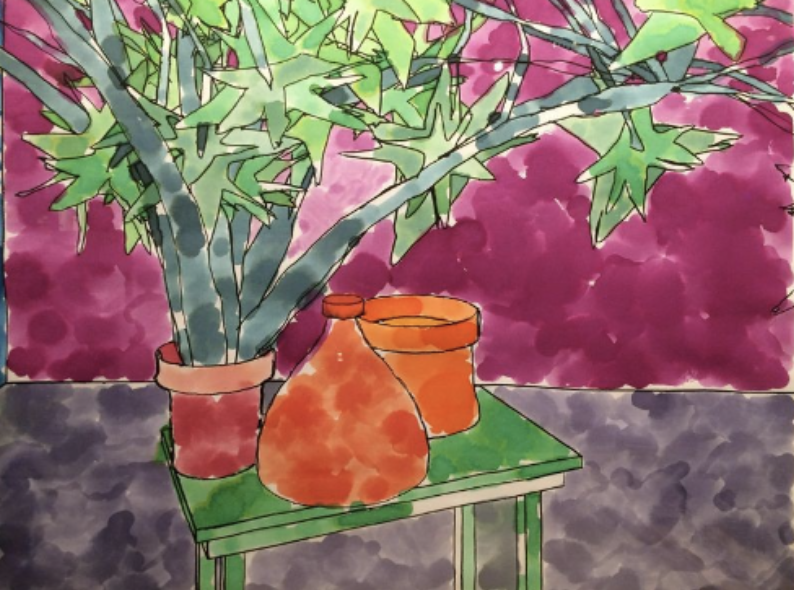Artificial Intelligence in Art and the Concerns That It Raises
Artificial intelligence (AI) has begun to influence the world more and more each day. One field that has gained a lot of controversy due to the usage of AI is art. One of the largest concerns has been the originality of human creativity.
In this blog, we will go over the large improvements in the quality of art made by AI and some ethical concerns about using AI for art.
A Brief History of Art Paired With AI
Over the past 70 years, AI with art has rapidly improved to a point in which AI can rival humanity's greatest artists. Here is a quick overview of the successes in AI art.
Generative Art in the 1970s-1980s
By using techniques created in 1973 by artist Harold Cohen created a computer algorithm that could mimic freehand sketching. This was one of the earliest uses of computers for creating art. This computer(Aaron) was trained and programmed on data sets using Cohen’s specific style. Their art was exhibited at the Stedelijk Museum in 1977.
The Age of Neural Networks in the 1990s-2000s
Neural networks were a large breakthrough in the world of artificial intelligence and allowed the production of more sophisticated algorithms for art. Consequently, art using AI became more prominent. Artists like Cohen continued to improve their algorithms using current technology
The Deep Learning Revolution 2010s-Present
Deep learning and generative adversarial networks (GANs) opened even more possibilities for AI-generated art. Present-day technology paired with large training models has allowed AI to produce intricate and hyper-realistic art. As a result of the new AI art revolution, many ethical concerns have arisen that question originality and authenticity.
How to Produce AI-generative Art
Before we dive into the ethical concerns of art by AI, if you are curious about creating your own AI art, below are a few groundbreaking AI image generators.
DALL-E 2
Created by Open AI, Dalle is an AI-powered image generator. Users will prompt a detained text and software will return an image based on your input. First, the input is tokenized and then uses a transformer to understand the textual prompt. Then by using transformer architecture the textual prompt is generated into a latent representation and later decoded into an image synthesis model.
MidJourney
Although Dalle has a better text-to-image diffusion model, Midjourney excels in its artistic style. Midjourney has inspired many artists with the vast capabilities of beautiful realistic images. MidJourney is one of the many free AI-generating software that contributes to this new artistic revolution.
Runway AI
Using similar AI models to Dalle and MidJourney, Runway is able to generate small video clips based on text prompts. Although this Runway is a paid software, it offers the next generation of text conversion to generative content.
Ethical Concerns For Using AI in Art
Although AI-generated art has not been out for long, it has already resulted in a large amount of controversy.
Copyright Principles
In order to produce state-of-the-art AI-generated art, models need to be trained on a variety of datasets. This means that these models are trained by the works of many artists. Getty Images is currently suing Stability for using Getty IMages’ library to train Stable Diffusion. Getty is estimating damages up to 2 trillion dollars.
Uniqueness
Since AI-generated art is trained on the work of other artists, AI software is taking the creativity of the artists as well. Now that legislation is stepping in, it is crucial to draw a reasonable line. On one side, AI-generated art is only successful because of the intense training data, and without it, this beautiful form of art would not be able to be produced. On the other hand, however, it is important to understand the negative effects of AI-generated art using content from artists and consequently taking from their revenue.
Bias
Similarly to most other AI applications, AI-generated art is susceptible to biases implemented in its training data. This can result in exclusionary representations in art. In order to maintain diversity and inclusivity in AI art, training problems need to be addressed.
The Future of Human Creativity
Art is a beautiful activity that relies on creativity. As many artists are now looking at AI-generated art for inspiration, human creativity is on the road to decline. Before people start freely using these software, it is important to address the fact that these software should be used to serve as a tool to enhance art, rather than replace creativity.
Conclusion
AI-generated art has surprised the world with beautiful realistic images and raised philosophical and ethical concerns. As we dive deeper and deeper into AI paired with art, it is necessary to maintain discussions to address concerns about the future of AI-generated art. We need to consider how AI will affect the art market, the lives of artists, and the originality of the artist's pieces. My biggest concern is that, if used incorrectly, AI will replace human creativity. Before using any AI software, make sure to use it as a tool, not a replacement. AI is being introduced into the world at a rapid pace, and although it will improve life in many aspects, it will also cause problems. The question is, what is the artificial line that AI should not cross?
About Inspirit AI
AI Scholars Live Online is a 10 session (25-hour) program that exposes high school students to fundamental AI concepts and guides them to build a socially impactful project. Taught by our team of graduate students from Stanford, MIT, and more, students receive a personalized learning experience in small groups with a student-teacher ratio of 5:1.






